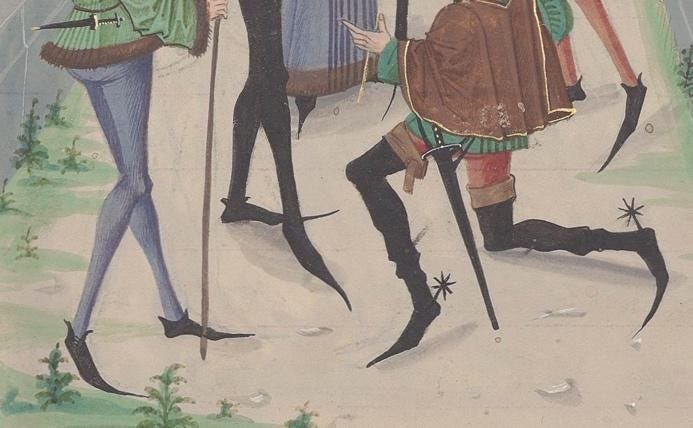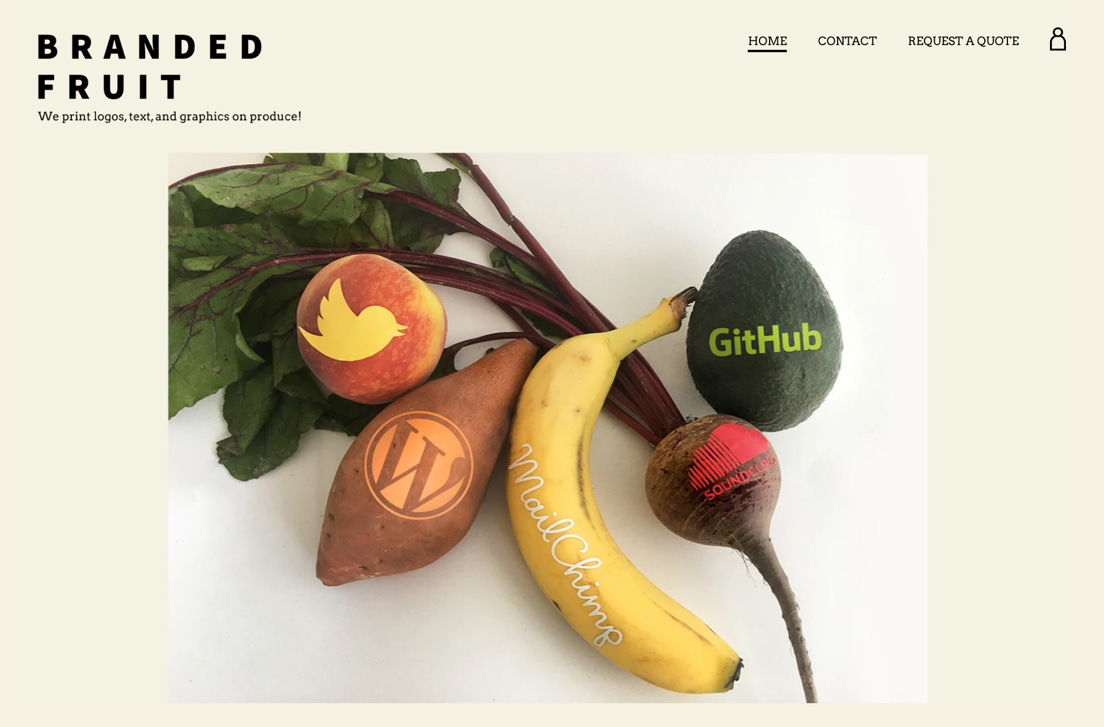WEIRD as a Service
Digital fragrance as NFT, a $40 billion Dogecoin market cap, unprecedented stock market speculations... weirdness is no longer feared but leveraged!
The irrational exuberance evoked by Greenspan in the 90s now seems to be on steroids, or even crack: Anil Dash recently reported that back in march, one of the best-selling app on his platform was an app designed to block crazy NFT sellers. Aw, just what on earth is going on here?
Has the ultra weird become the biggest post-pandemic market?
Living in a world that is more and more like a bad hangover, it was logical that the weird would explode. Not a week goes by without the bizarre at scale invading our screens and our impeded lives. A few months ago, in an interview for the online magazine CTRLZ Mag, Sebastien Liébus, co-founder of the French satirical news site Le Gorafi said: "Since 2020, we have the impression that the world has become a giant Gorafi (...) We are in a race with reality to succeed in setting new milestones for satire because the ones we used to use have been taken over by reality."
Certainly, there were disconcerting warning signs: the asymmetrical jeans, the “Cheaters” edition of Monopoly and the explosive eccentricity of Maria Pasenau, the absurd Mona Lisa duck, the dirty rotten flowers to declare one's non-love, the synthetic diamonds made from the ashes of a dearly deceased loved one, or even customized potatoes.
We felt that society was just waiting for COVID to shift... But for the past few months, the inflation of the Super Weird seems to be out of control. If you are not convinced, take a look at these. In the span of a few months we have had an inflation of weirdness (beware, this is not a parody):
Luxury dog macarons (a best-seller in Amazon's pet category at Christmas)
A Wizard in New Zealand paid $10,000 a year by the government
Long story short, in 2021, Alice's Mad Hatter took over the world. He puts out WEIRD without paying attention to any logic.
The revenge of the inner Punks
Historians warned us that great periods of pandemics shift conventions. In the medieval period, Poulaines, these strange long-pointed shoes, came into fashion following violent and deadly episodes of plague. A coincidence? Not exactly.
"Poulaines stand out even more because medieval fashion was often governed by clean lines and a practical chaste minimalism," says fashion history expert Rebecca Shawcross. (Poulaines also marked a rare period in history when men's fashion outshone women's in terms of sheer frills, according to Jackie Keily, curator at the London Museum). Perhaps the best explanation for this puzzling flamboyance is that the shoes appeared shortly after the Black Death killed 30 to 60 percent of the European population. "It may have been a reaction to a kind of austerity," explains Jackie Keily. "The plague left a landscape with a lot of people who had lost close family members, a generation of mourning. Suddenly, there were less people who had more money to spend on clothes." So, Poulaines may have been a kind of business therapy for dealing with the surprise loss of 25 million people. Keily refers to other fashion trends that followed mass casualties, such as the conspicuous designs that emerged in the 1950s and 1960s following World War II.
This is where we are in 2021. With the exterior constrained and pallid, interior eccentricity is gaining ground. As cyberpunk-infused essayist Douglas Rushkoff reminded us, in a world run by algorithms, weirdness is our best weapon: the inner punks have taken over, and more importantly, they're taking revenge on the algorithms. "In a middle school where social media likes are the metric of popularity, the spoilsport is the kid who deletes the app or chooses not to own a phone at all. The spoilsport takes actions that make no sense within the logic of the game. Such abnormal behavior challenges convention, breaks the conspiracy of conformity, and stumps the algorithms. A.I.s and other enforcers of social control can’t follow what they can’t categorize. Weirdness is power, dissolving false binaries and celebrating the full spectrum of possibilities. Eccentricity opens the gray area where mutations develop and innovations are born." A space of freedom, perhaps the only one.
This is also what psychologist Judith Zackson reminded us on CNN last January.
"Eccentric individuals see challenges and solutions from unexpected angles, and their weird thinking allows them to come up with innovative and imaginative solutions... By choosing to march to your own beat, you can access your creativity, your curiosity, your happiness and make a difference in the world."
In this sense, the weirdo is also a master of resilience with a great survival instinct.
And what if the "nonsense" was a sign?
Not so crazy, the weirdo. And perhaps even a precursor. Before sweeping the eccentricity under the carpet of a desperate era, it is worth asking ourselves if this weirdness might not hold a profound lesson in marketing, whether this WEIRD at scale was the sign of leaving the Airspace era or the smooth aesthetics of the Instagram era?
When nonsense pops up, that's when the eye needs to get sharper, and that's precisely the lesson for the well-known hedge fund investor, Adam Robison: "One of the keys in investing is to pay attention when you hear a voice in your head that says it doesn't make sense. That's where the gold mine is — the things that don't make sense. [...] When the world does the opposite of what you think it is going to do, it is not the world that is wrong. It is you. Things that don't make sense are your best learning opportunities."
Ultimately, since we can no longer live outside, since we can no longer cling to normalcy, let's get all quirky and reignite our inner oddness. The inner weirdo is a tightrope walker on the edge of the abyss who finds their way when everything is impeded.
And this is the last lesson of the WEIRD: the external eccentricity is an act of resistance. An overexcited mirror held up to the absurdity of the world, a powerful revolt against the deafening assaults of despair from a mired situation.
WEIRD$ is the new black
What about the business aspect? Some profiles have obviously left their mark on our contemporary era by creating lucrative, and, above all, disruptive companies that completely reinvent the world we live in. We are, of course, talking about emblematic personalities such as Elon Musk, Mark Zuckerberg or Jack Dorsey, who are known to be very eccentric and have ideas that seem really weird at first, but eventually become mainstream. What do they have in common? They are each non-conformist, creative, idealistic, extremely curious and very much driven by the notion of surpassing themselves and finding meaning in their lives. Weirdos? Without a doubt.
Their personal interviews are just as fascinating, even unreal when you pay attention. We can learn that the founder of Facebook has a pet goat named Bitcoin, that Elon Musk gave his 6th son the acronym X Æ A-12 as a first name, while Jack Dorsey is proclaimed by the media as the strangest life coach on the internet because of the asceticism that he pushes to the extreme (meditation, infrared saunas, fasting, etc.). Whether we like it or not, we are not indifferent. This stuff surprises, fascinates and transports us to another galaxy.
But this is only the tip of the iceberg, the first signs of a movement that is growing. We are convinced that the game is changing and that we are about to enter an exacerbated era of eccentricity, a commoditization that will emerge in our complex attention economy. In short, weird-at-scale, endlessly.
Niche businesses have found their playground
Let us explain: the media revolution, especially the one induced by the internet and social networks, has allowed these profiles and their niches to emerge. In short, they have more visibility. Some of them, thanks to this media exposure, have been able to federate important communities (or even cults!) around them. The next acceleration of the phenomenon is happening today with the democratization and professionalization of the Creator Economy. Thanks to low-code and other dedicated tools, these unusual creators will be able to easily scale their business. While funding may have been a problem in the past, it's no longer all about convincing VC funds. On the contrary, communities can now support and fund creatives they believe in. This is a major paradigm shift. Our model of society is changing from institutions and companies... to the individual. And in this major revolution, new models of person-to-person funding will disrupt our patterns.
Mike Erre, for example, is a creator on Patreon who generates $2,000 every month via his community through his podcast that "interprets Jesus in modern times." Though, that sum may pale in comparison to the +$85,000 earned each month by another podcast, that of "Last Podcast on the Left" a comedy of morbid and macabre subjects. You also have the serial weirdo-entrepreneurs like Danielle Baskin, who founded Maskalike, a service that prints a realistically version of your face on your mask.
She told us during a call on Dialup — her serendipitous voice chat — that she received more than 6,000 orders in less than six months. Another unusual business she launched is Branded Fruit, a company that prints brand logos on fruits and vegetables. It’s a "side-project" that has generated $120,000 in revenue in one year.
One last example? Her "Decruiter" service. The pitch? Unlike a recruiter, who can help you get hired, the "Decruiter" helps you leave your job. Weird? And yet, according to her, there is a market. While she hasn't done any major promotion of it — due to lack of time and multiple projects in parallel — she has already coached about forty people thanks to word of mouth.
Moreover, the technological acceleration is such that the WEIRD dynamic is intensifying every day. Indeed, innovations quickly give birth to new services and new uses. And as people have no idea what to do, since the playbook is being written in real-time on social networks without constraint and without limit using test and learn, the most far-fetched imaginations have free rein. The case of NFT, non-fungible tokens, is a perfect illustration. For a playful review of the most eccentric examples, such as the NFT toilet paper, see here.
It is a crazy world, right enough. The big question today (tinged with a bit of fear and a lot of curiosity) remains: what can we expect in the next months? Can we even imagine it? Nothing is certain!
Marie
This article is co-written with my dear friend Patrick Kervern (translated from French)






